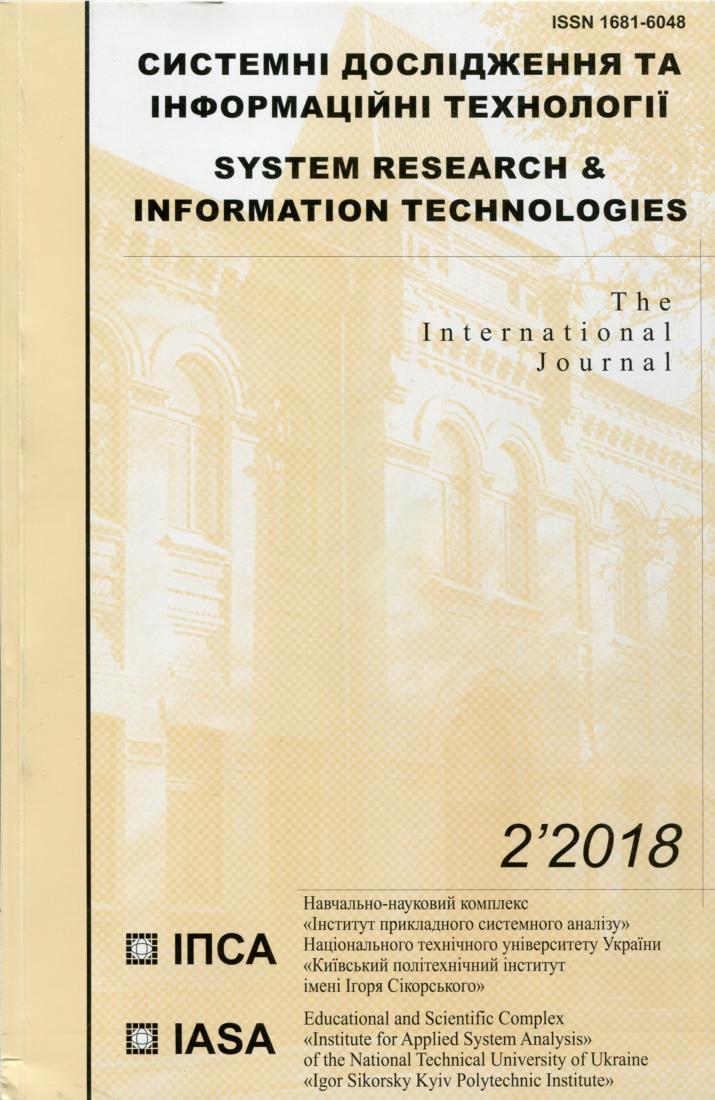Development of the performance prediction algorithms for cloud services
DOI:
https://doi.org/10.20535/SRIT.2308-8893.2018.2.01Keywords:
data center, service transactions index, service resource occupancy index, service performance index, fuzzy judgment matrix, Lyapunov exponent, radar chartAbstract
Main stages of data center service performance prediction were discussed, specifically data monitoring and gathering, calculation and prediction of key indexes and performance index prediction. It was proposed to build data center service performance prediction algorithm based on an analysis of the service transactions index, service resource occupancy index and service performance index. Prediction of the indexes is based on chaotic time series analysis that was used to estimate service transactions index time series trend, the radar chart method to calculate the service resource occupancy index value and weighted average method to calculate service performance index. For performance prediction, it is proposed to use a fuzzy judgment matrix with the service transactions index and service resource occupancy index as input values. It was taken into consideration that service transactions index is usually represented by nonlinear time series and thus the index time series parameters had to be predicted by chaos theory and for the calculation of this index, the estimation procedure of Lyapunov exponent value can be used. The radar chart demonstrates service resource occupancy index estimation of shared storage, mobile storage, memory, computational capability and network bandwidth. The prediction technique was based on the fuzzy nearness category that use input values of transactions index and dynamic changes of the service resource occupancy index.References
Wu C. Software Monitoring in Data Centers. Handbook on Data Centers / C. Wu, J. Guo. — 2015. — P. 1209–1253.
Newcombe L. Data Center Financial Analysis, ROI and TCO. Data Center Handbook / L. Newcombe. — 2014. — P. 103–137.
Román-Flores H. Chaos on Set-Valued Dynamics and Control Sets. Chaos Theory / H. Román-Flores, V. Ayala. — 2018.
Tang R. Metaheuristics and Chaos Theory. Chaos Theory / R. Tang, S. Fong, N. Dey. — 2018.
Hongliang L. A Fuzzy Comprehensive Evaluation Method of Maintenance Quality Based on Improved Radar Chart / L. Hongliang, L. Anxin, Z. Bin et al. // 2008 ISECS International Colloquium on Computing, Communication, Control, and Management.
Shi J. The domain decomposition method based on weighted average / J. Shi, Y. Liu, W. Zhou // 2011 IEEE International Conference on Computer Science and Automation Engineering.
Harris J. An introduction to fuzzy logic applications / J. Harris. — Dordrecht: Kluwer Academic.
Anderson M. Fuzzy logic / M. Anderson. — Parkdale, OR: Black Opal Books, 2015.
Dimitrov V. Fuzzy logic: A framework for the new millennium / V. Dimitrov, V. Korotkich. — Heidelberg: Physica-Verlag, 2011.

